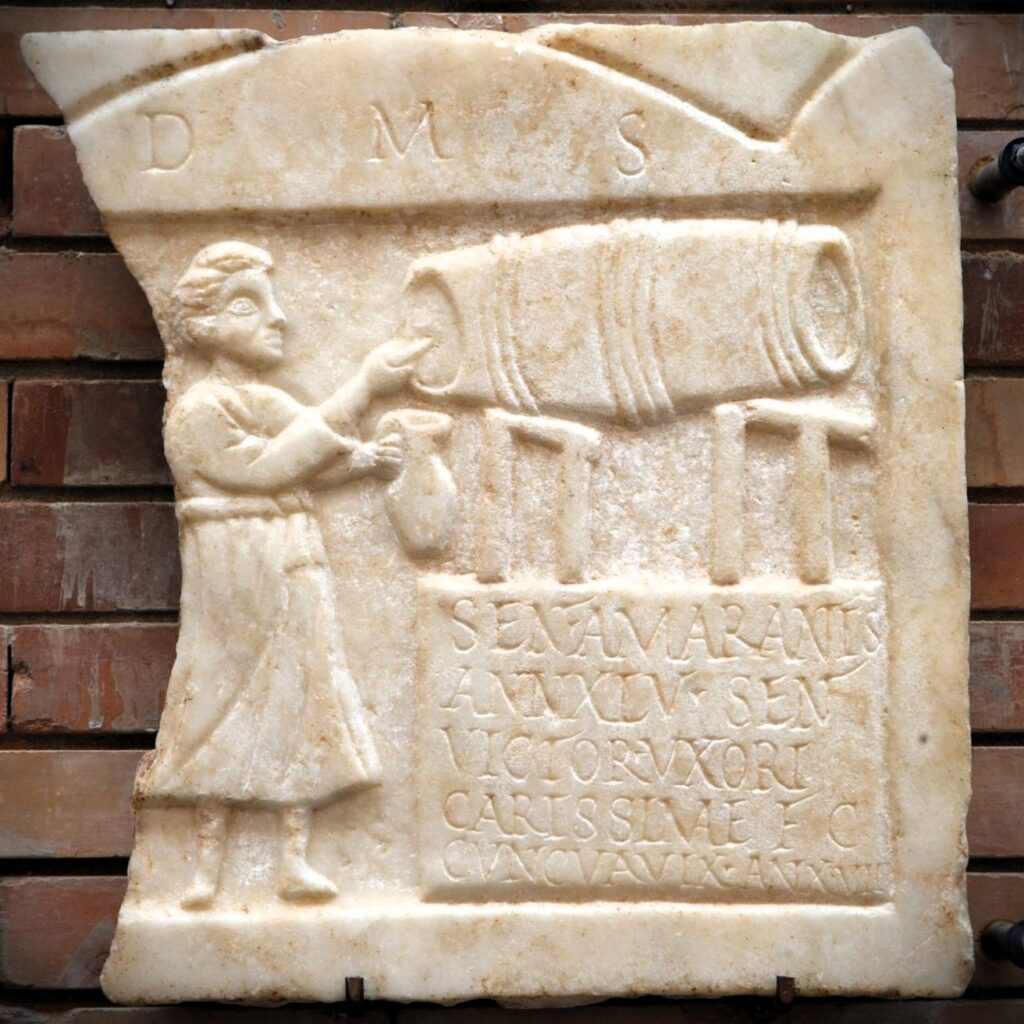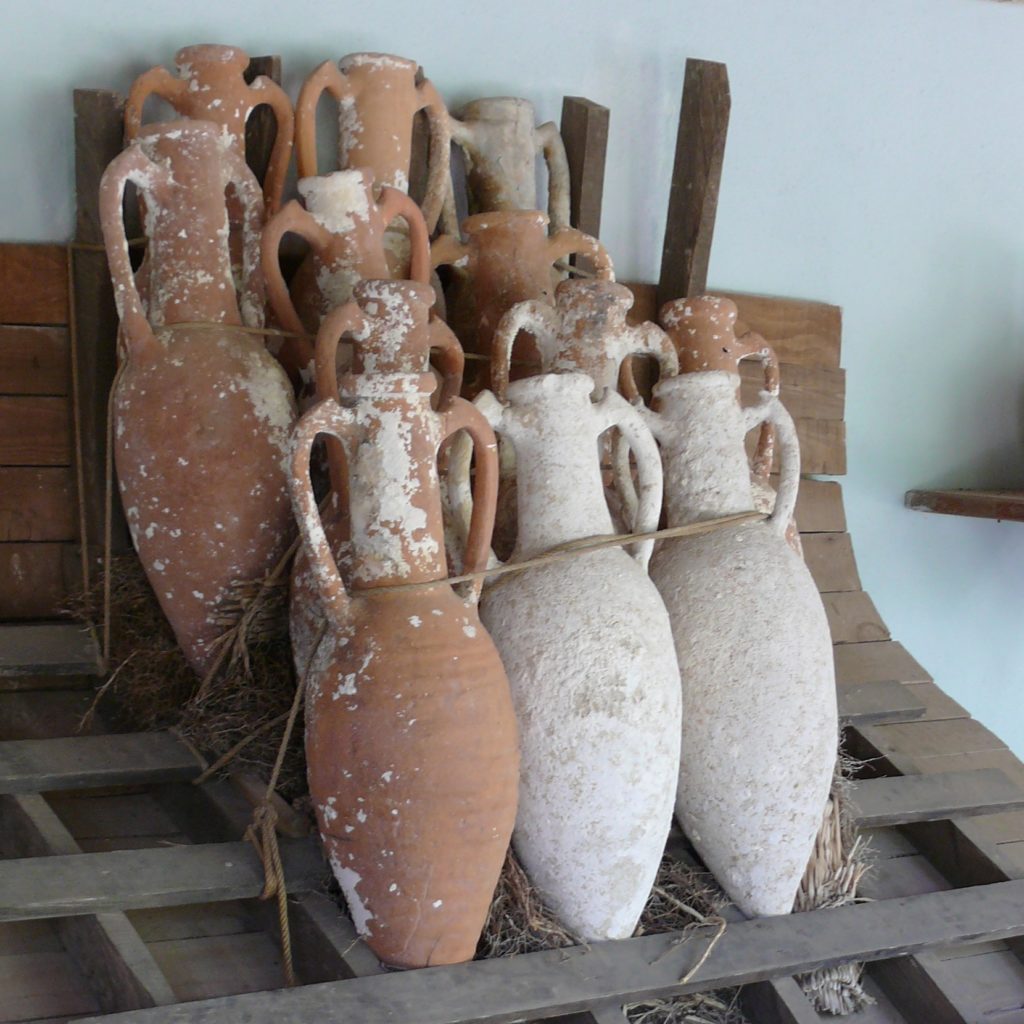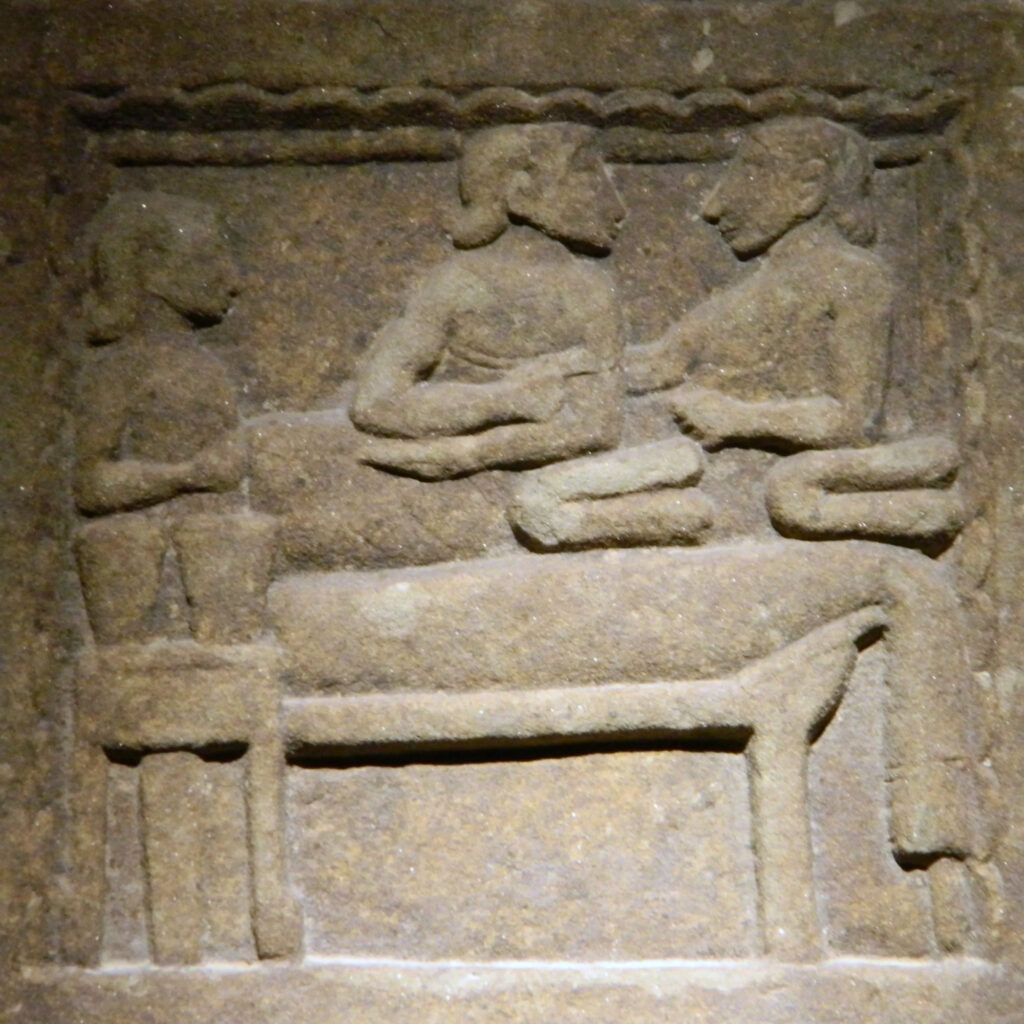Translated from french (please notify us of errors)
 At the Museo Nacional de Arte Romano in Merida, a marble stele of modest dimensions attracts attention through its originality. Dated to the late 2nd or 3rd century CE, it commemorates Sentia Amarantis, who died at the age of 45 in ancient Emerita Augusta, capital of the province of Lusitania.
At the Museo Nacional de Arte Romano in Merida, a marble stele of modest dimensions attracts attention through its originality. Dated to the late 2nd or 3rd century CE, it commemorates Sentia Amarantis, who died at the age of 45 in ancient Emerita Augusta, capital of the province of Lusitania.
The funerary inscription follows the classic formula of Roman epitaphs:
D(IS) M(ANIBVS) S(ACRVM) / SENT(IAE) AMARANTIS / ANN(ORVM) XLV SENT(IVS) / VICTOR VXORI / CARISSIMAE F(ACIENDVM) C(VRAVIT) CV<M> <Q>VA VIX(IT) ANN(OS) XVII
‘Sacred to the divine shades. To Sentia Amarantis, aged 45 years. Sentius Victor had this monument erected for his dearest wife, with whom he lived seventeen years.’
The epitaph reveals a couple united for seventeen years. But unlike the customary female tombs that celebrate marital fidelity (univira), wool-working (lanifica) or domestic discretion (domiseda), here it is the profession that defines identity.
The relief depicts Sentia Amarantis in the daily exercise of her trade: standing behind a large barrel, she draws wine to pour it into a jug. The scene takes place beneath an arcade evoking the architecture of a taberna, those establishments where food and drink ready for consumption were sold.
The deceased wears a round-necked tunic descending to the knees, with long sleeves and belted – the functional garment of a working woman. The original composition must have included a second figure to the right, now lost.
The choice to depict a barrel rather than an amphora is not without significance. Unlike the Mediterranean regions where the amphora dominated, Lusitania favoured the barrel for the transport and sale of wine – a Celtic tradition adopted by the Romans. The relief of Sentia Amarantis thus constitutes valuable archaeological evidence for studies on the wine trade in Roman Hispania.
A freedwoman merchant
The couple’s onomastics reveal their social condition. Sentia Amarantis bears a Greek cognomen – Amarantis, ‘she who does not wither’ – combined with a Latin nomen. This combination characterises freedpersons: former slaves who had obtained their liberty, they took the family name of their former master whilst retaining their original name.
Sentius Victor, who bears the same nomen (Sentius) as his wife, was most likely also a freedman of the same family. The cognomen Victor, typically Latin and evocative (‘the victorious one’), was frequently given to slaves. The couple represents that urban middle class of the Roman Empire which, through work, achieved a certain prosperity. The museum’s caption indicates that Sentia ‘entered the trade of tabernaria at her husband’s side’, suggesting a family enterprise prosperous enough to finance this carved marble stele.
Exceptional visibility
The fundamental originality of this monument lies in the visibility it gives to a woman’s professional activity. Whilst numerous women – particularly amongst freedwomen – worked as merchants or craftswomen, rare are the monuments which, like that of Sentia Amarantis, place the profession at the heart of the funerary representation.
Other comparable stelae exist: that of Til-Châtel (Côte-d’Or) showing a wine seller behind his counter, that of Pompeianus Silvinus à Augsbourg (3rd century), or the stele of the tavern-keeper from Bordeaux (2nd-3rd century). These reliefs share the same professional pride and constitute valuable documents on the material organisation of the tabernae vinariae, those wine shops that lined Roman cities.
Specialists have classified this stele in the category of ‘popular art’ due to its modest technical standard. However, the documentary value of these monuments far exceeds their artistic quality. This is not a realistic portrait but a narrative description of the trade. The sculptor fixed for eternity the daily gesture that defined the deceased’s social identity.
In having this relief carved, Sentius Victor wished his wife to be recognised and celebrated for what she had been in life: a worker, a merchant, an active woman of the city. This stele bears witness to a form of dignity of labour that transcends social hierarchies. Sentia Amarantis was neither a patrician nor a great landowner, but in her husband’s eyes, this life merited immortalisation in marble.
Museum caption
Funerary stele of Sentia Amarantis, late 2nd century – 3rd century CE, marble, H. 38.5 cm × W. 36 cm × D. 4 cm, provenance: Cuartel de Artillería, Merida (Badajoz), inventory no. CE00676. Museo Nacional de Arte Romano, Merida (Badajoz), Spain.
Other articles in English from the Nunc est bibendum blog








